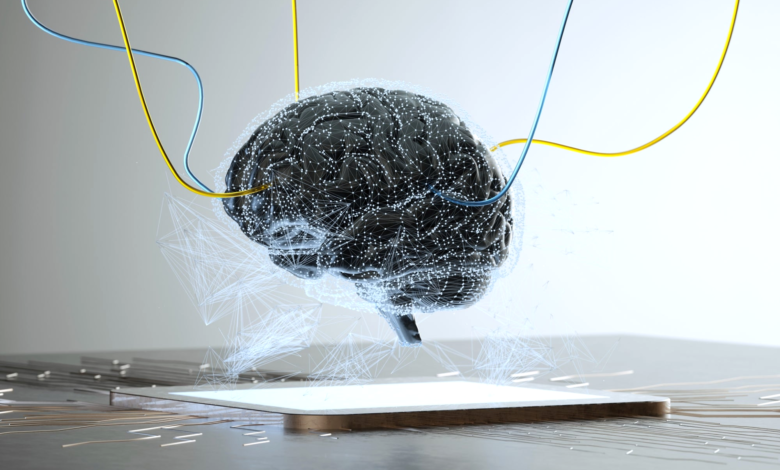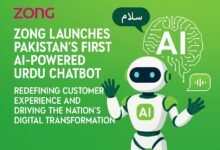How Artificial Intelligence is Changing the Face of the Education Sector

As a senior lecturer, trainer, and CEO, I’ve worked in education for decades. When people ask me what the biggest problem is for learners, the first thing that comes to mind is that they regard training as something they “have to do.”
Let’s think about this for a bit. What brought us here? Why aren’t we talking about what we “want to do” or what we’re “glad to have the chance to do?”
The answer is complex, but I’ll attempt to simplify it for you: Training might be difficult. It takes time for businesses to organize courses, curricula, and other content, track progress, and show ROI.
Furthermore, employees dislike formulaic training that fails to meet their needs and takes time away from their already hectic schedules.
These ostensibly difficult activities turn a basic business procedure into something that many employees are hesitant to participate in, which is a negative for any firm. Great learning, in my opinion, stops organizations from becoming stagnant and irrelevant.
Read More: Why Are AI Writing Tools Beneficial to Content Creation?
I’m also convinced that we can and should do more to make learning more meaningful and less of a chore for both employees and businesses. Many business domains are already being shaped and improved by artificial intelligence (AI), and learning activities should be no exception. AI can speed up and improve learning processes and outcomes in large and small businesses alike, thanks to its quick capacity to collect and analyze enormous amounts of data, improve decision-making, and personalize learning trips.
So keep tuned: Here are five major ways AI will alter education in the near future.
1. Optimizing learning recommendations
Despite the fact that we all have varied requirements and abilities, training is rarely customized to meet those needs. For example, it’s becoming more common for businesses to provide access to a large online course library, assuming that learners will simply pick and choose what’s best for them.
While having a lot of alternatives might be beneficial, having too many can be detrimental. An AI-based approach is a happy medium between manually assigning training and having an open “buffet” for better, more tailored learning recommendations.
Rather than having to make a slew of options, employees may focus on one: setting career-related learning goals. Consider how much easier it would be if each job role came with a set of relevant competences that the trainers could configure. An intelligent learning platform, aided by AI, can examine each student’s skill map, highlight strengths and weaknesses, and instantly send recommendations depending on what the learner has still to master, eliminating guesswork and the time it takes. Today, some technologies are beginning to permit this, and we will soon see these capabilities implemented on a larger scale.
2. Improving the learning process
To meet the needs of their employees, effective learning professionals mix and match training forms and modalities. They combine formal and informal learning, synchronous and asynchronous possibilities, and on-the-job training, with social learning thrown in for good measure.
The complexity of learning is recognized by a good AI system, which allows fine-tuning like this scalable. Recommendations can be fine-tuned and personalized on the go (depending on an employee’s most recent training activities or performance) to recommend talking to a subject matter expert, joining learning groups, or watching how-to videos, for example.
With AI, we’re moving toward a new paradigm: learning technology as a hub for employee interaction, which is critical for remote and hybrid teams. This technology will connect remote employees with the relevant mentors and experts, allowing them to engage with professionals who share their interests and, as a result, find their place in their learning community.
3. Providing high-rated resources
Learners’ options can be narrowed by AI-based training recommendations, allowing them to access the highest-rated information first. In this way, AI addresses two major issues.
For starters, it reduces decision fatigue. People will not prioritize learning if it comes with additional to-do lists, given my experience in corporate training. There is simply insufficient time and motivation.
Second, it enables learning systems to provide highly customized recommendations. As previously said, business training is still not personalized in any way. Everyone has the same assigned, one-size-fits-all module, and quantity typically takes precedence over quality.
Other students can rate each tip, whether it’s a resource or a suggestion to contact an expert. This is advantageous from the standpoint of a trainer or manager, especially when dealing with a vast course catalog, because it ensures that learners receive the highest-rated recommendations first, thanks to AI.
4. Employee empowerment
When AI is included into learning, employees may have more choice over what, how, and when they learn.
Imagine a goal dashboard where learners can see everything connected to their selected learning goal, including competencies, progress over time (and remaining areas), and recommended resources — and even participate in a gamified Q&A forum to get answers to queries about their objectives. Individual learning paths become more obvious since each learner understands where he or she stands, which is difficult to determine in typical training situations.
Employees take ownership of their training when they have all of this information at their fingertips.
5. Providing augmented training experiences
Across industries, we’re getting closer to simplifying and streamlining learning processes. Learning technology is becoming more proactive (with suggested content and learning journeys) rather than merely responding to what users do, which is a crucial indicator of this shift.
Some fields require and benefit from a more complex training method, which is where augmented reality can help. Employees will be able to virtually immerse themselves in realistic settings in the future, practicing safely and increasing their confidence in their abilities. Manufacturing organizations, for example, use augmented reality to teach staff new technical skills while avoiding workplace accidents.
Voice control using virtual assistant technology, such as Amazon Alexa, is another intriguing development. Employees will likely interact with learning technology on a deeper level in the coming year, with platforms able to proactively remind them of learning activities, among other things.
Read More: 5 Ways Artificial Intelligence (AI) Will Transform Digital Marketing in 2022
6. Making Artificial Intelligence (AI) work for better training
The transition from standardized, cookie-cutter instruction to personalized learning will be aided by AI. It will enable learners to acquire the correct resources at the right time to progress their knowledge and abilities, as well as empower them to take a more active role in their own learning and provide companies with more instant insights into learning effectiveness and future actions.
The cost and technological hurdles to personalized learning and other AI-based skills are continuing to fall, putting personalized learning and other AI-based capabilities within reach of many businesses. While employees will still be required to learn, it will feel less like a chore, making it more enjoyable and productive to engage in, resulting in increased business growth.












6 Comments